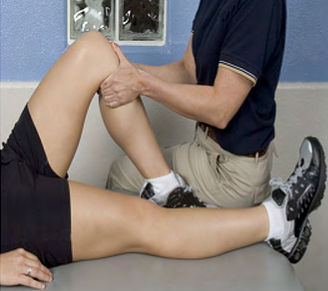Knee ligament injuries are unfortunately all too common in athletes, who put a tremendous amount of strain on them and they are easily subject to injury from typical athletic movements. The anterior cruciate ligament (ACL) connects the femur to the tibia at the front of the knee, and the posterior cruciate ligament (PCL) connects the same bones, but at the back of the knee. These are the ligaments that enable your leg to bend back and straighten at the knee. The two other knee ligaments are the medial collateral ligament (MCL), which connects the femur to the tibia on the inside of the leg, and the lateral collateral ligament (LCL), which connects the femur to the fibula on the outside of the leg. For patients who do suffer from knee ligament injuries or even sports related injuries, chiropractic treatment is a great option to getting to the bottom of your pain. Visit Dr. Michael Kauf to receive a consultation on your injury.

ACL injuries are most often caused by turning the body suddenly while the feet remain planted. Basketball and football players are especially prone to this type of injury, where the sudden twisting motion causes an overstretching or tearing of the ACL. A popping sound can often be heard when the ACL tears.
A strong impact to the front of the knee or a hyperextension is the most common cause for injury to the PCL, the largest and strongest of the four ligaments supporting the knee. The impact of a car’s dashboard hitting the knee during an accident can often cause this type of injury.
The MCL and PCL are responsible for stabilizing the knee in side-to-side movements, which normally involve a small range of motion, as the knee is designed primarily to move forward and back. Blows to the side of the knee or falls during sports such as skiing (where 60% of all knee injuries are injuries to the MCL), in which the leg is forced to overextend sideways at the knee are what generally cause sprains to the MCL and PCL ligaments.
Most mild to moderate knee ligament injuries will eventually heal by themselves. If the MCL or LCL is completely torn, surgery to reattach the torn ligament will be necessary. However, this happens the ACL or PCL, reattachment is not possible, and the only option is total reconstruction of the ligament from another ligament taken from elsewhere in the body. For the mild to moderate injuries there are a number of things you can do to help speed the healing process:
• Rest the injury as much as possible to avoid doing further damage. If you must walk, use crutches to keep weight off the affected leg.
• Apply ice to the injury for 20 minutes every three to four hours up to the first three days after injury or until most of the pain and swelling have disappeared.
• Use an elastic bandage to compress the knee area in order to help keep swelling to a minimum.
• Consider taking an anti-inflammatory NSAID (such as ibuprofen) to manage pain and reduce inflammation.
• Keep the injury elevated. This also helps keep the amount of swelling down, speeding the healing process.
